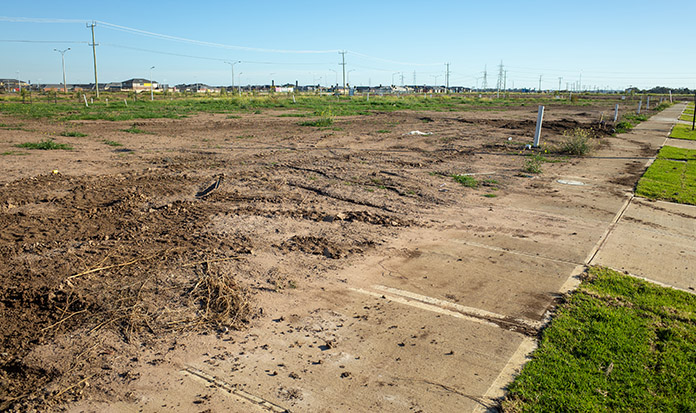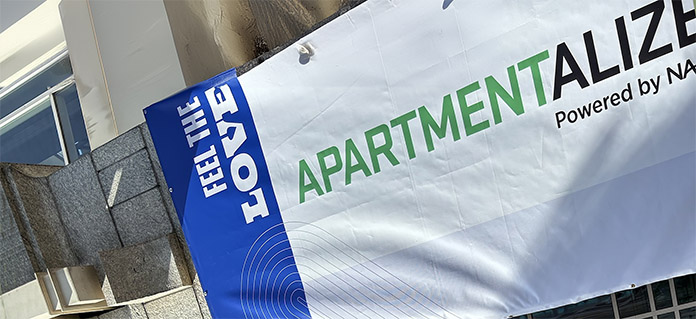My cousin Daniel, not the world’s most sociable guy, suddenly feels like the king of popularity. A recent college graduate, employed for a whopping four weeks, Daniel just found out that he is a highly desirable apartment resident. Walking into an empty leasing office, he was welcomed by a pair of friendly leasing consultants who plied him with lemonade and still-warm-from-the-oven cookies. Thirty minutes later, he left with floor plans for five different one-bedrooms, all available immediately with a selection of finish-out and view choices, plus one month’s free rent prorated over the length of his lease. He was promised an additional $300 off the first month’s rent if he signed up within three days of his initial visit.
Unfortunately, there are too few prospects like Daniel to go around, so U.S. apartment market conditions are the softest seen in a decade. National occupancy has eased to just below the 93% mark, according to M/PF Research’s spring 2003 survey of more than 3.7 million units in 16,700 projects. That occupancy rate dips 4 points from the peak recorded in fall 2000. On top of that, average effective rents, taking into account the impact of widespread rental concessions, have been declining since early 2001.
Faltering apartment revenues reflect problems on both the demand and supply fronts. Demand struggles have been two-fold: the economy has been too weak to spur substantial new household formation; at the same time, top-end renters have been drained out of the apartment resident pool, opting to buy homes in order to take advantage of mortgage interest rates at 40-year lows. New product deliveries have not cooled alongside the slowdown in demand, however, because product that was in the midst of the planning stages when the economy was in its boom period is still being added.
The midwest: Demand has disappeared
Midwest apartment owners and managers are wondering where all the renters have gone. Although the region is not adding new product at an aggressive pace, demand has not been able to keep up with even the relatively small amounts of new supply coming on stream. The shallow demand stems from the floundering economy, not surprising given that job cuts during a recession are almost always worse in areas where manufacturing comprises an unusually large share of the total employment base. Although the Bureau of Labor Statistics reports that at least slight year-over-year job growth had returned by spring 2003 in a little more than half of the nation’s 95 largest metros, Cincinnati is the only key market in the Midwest that added jobs during the past year.
Average apartment occupancy in the Midwest is currently the weakest in the nation at a sickly 91.7%. Minneapolis stands alone as the only Midwest market with occupancy above the U.S. norm, and even there the comparatively healthy occupancy rate of 93.2% is down 3 points from the year-earlier level. Chicago, typically a regular on the national list of top 10 occupancy performers, has seen occupancy slide to 91.8%; and, in the worst cases, vacancy reaches double digits in Kansas City and Cincinnati.
With occupancy rates so low, apartment managers and owners have been forced to implement steep rental concessions and other leasing inducements to keep current residents and entice prospective residents. Measuring change among an identical group of properties, Midwest region apartment communities reported a 2.6% reduction in effective rents during the past year, suffering the biggest cuts seen in any region of the country. Rental rates dropped 5.8% in Minneapolis, 3.6% in Chicago and 2.6% in Indianapolis.
The south: Too much new supply
While the South has seen leasing activity slow, demand has not evaporated completely. For the region as a whole, then, excessive new supply is playing a bigger role in the softening of market conditions. Atlanta, the nation’s construction leader over the past few years, finally has ceded that number one spot, but the new development hot spots are likewise southern metros, the South Florida area, Houston and greater Washington, DC.
Supply outpacing demand left the South’s overall occupancy rate at 92.1% as of spring 2003. Notably stronger performances are reported in a handful of markets, including Norfolk, Washington, DC and neighboring Baltimore, as well as South Florida’s Miami and Fort Lauderdale cluster. In contrast, occupancy has dipped below 90% across Atlanta, Charlotte, Austin and Dallas.
South region properties surveyed in spring 2003 report a 1.2% drop in effective rents. The biggest declines occurring in Austin, Atlanta, Charlotte and Dallas, the same markets that have the lowest occupancy rates. Still, there are bright spots: substantial growth above 7% is seen in Norfolk, and rents have climbed roughly 2 to 3% in Baltimore and Jacksonville.
Most South region economies appear to be moving back on track. The latest available figures show Washington, DC as the nation’s job growth leader, and all markets across the state of Florida are exhibiting notable momentum. Dallas is the one locale in the region where annual job losses remain large.
The northeast: Rent growth returns
Bucking the trend registered in the rest of the country, effective rents in the Northeast inched up a little more than 1% during the past year, with growth in Northern New Jersey and Philadelphia outweighing flat rates or slight declines elsewhere. The region as a whole remains the nation’s most expensive market, as average monthly rents top $1,100.
High barriers to entry means the Northeast never adds much new supply. With little product in initial lease-up, occupancy routinely is the highest nationwide. Today’s occupancy rate in the Northeast reaches 94.9%, surpassing the national average by 2 points. Newark, which attracts renters who can’t afford to live in neighboring New York City, registers 97.4% occupancy, leading both the region and nation. In fact, according to the M/PF Research quarterly survey, Newark has sustained the tightest national occupancy for all but two quarters since mid-1996. Boston, which normally also ranks among the country’s tightest markets, is struggling, however, as occupancy has eased to 93.8%.
The west: Mixed trends
Down a little less than 1 point during the past year, Western region occupancy averages 93.9%. Effective rents also have declined, though the drop has been slight. More so than in the rest of the county, Western regional averages don’t tell the story, however, since this part of the country contains both some of the nation’s strongest performers as well as some of the most competitive leasing environments.
At the top of the spectrum, occupancy remains above 95% across the Southern California metros, Los Angeles, Orange County, San Diego and the Inland Empire (Riverside-San Bernardino), and, moving northward, in Oakland. This robust overall occupancy may not correspond to real world experiences for those owning or operating top-of-the-market communities. The fact that more affordable rental choices are bursting at the seams obscures competitive leasing conditions for the newest and most expensive options.
In a dramatic difference from the strong occupancy rates in most California cities, Denver has one of the nation’s lowest occupancy rates at 89.4%. Phoenix is doing only slightly better.
The Inland Empire leads the West region in rent growth for the past year, with effective rates up more than 5%. Rents also rose in the rest of Southern California. Moving in the opposite direction, rates have dropped 4 to 5% in Seattle, Denver and San Francisco, while even more dramatic cuts near 9% have occurred in San Jose and Salt Lake City.
A slow recovery
The U.S. apartment market’s road to recovery will be challenging. To date, the nation’s economic improvements have been focused on increased productivity, rather than the additional jobs needs to boost apartment demand. While job growth is expected to gain some ground during the next year, demand will remain sluggish in comparison to the levels seen from the late 1990s through about the middle of 2001. Furthermore, as supply continues to enter the market at a substantial pace, occupancy for the nation as a whole does not appear likely to bottom until late 2004 to early 2005, according to Multi-Housing Outlook, a market conditions forecasting tool by M/PF Research and Torto Wheaton Research. Weak occupancy in most markets dims the prospects for rent growth, especially since across many cities monthly apartment rents barely fall below the costs to buy a home when mortgage interest rates are so low.
When my cousin Daniel’s lease comes up for renewal a year from now, apartment leasing professionals will still be rolling out the red carpet.
Author: Joe Clements















